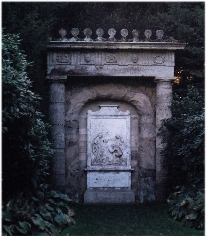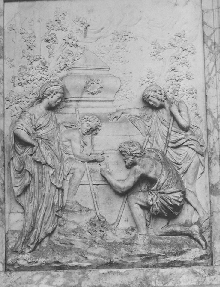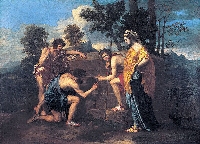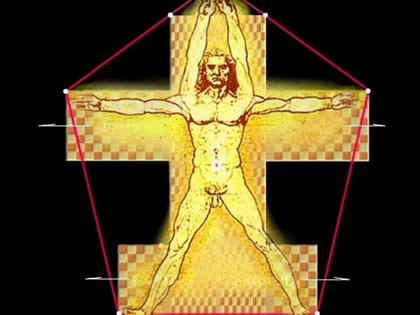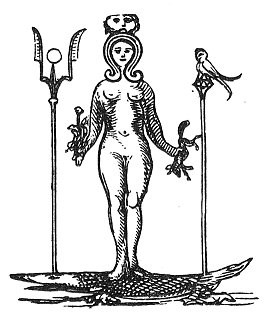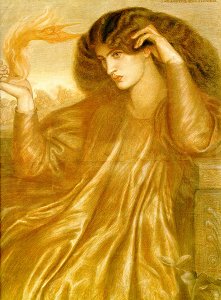|
|
Post by Goldenfleeced on Sept 2, 2013 19:57:18 GMT
The code on the Shugborough Shepherd's monument at Staffordshire in Lichfield, England has been confusing theorists since it was first created in the 1760s. Rumours say the secret letters on the monument are "hiding a set of instructions on how to find the Holy Grail, the chalice in which the blood of Jesus was collected, as it fell from his crucified wounds."
My research on the African Dogon religion ties the monument to the alien fish and serpent like Nummo, the Merovingians, Rosicrucians and the Masonic Society. Alchemy is linked to these groups because I believe it is associated with the lost science of the Nummo. In the Dogon religion, the four alchemical symbols, fire, water, earth and air were associated with the development of the world. They were also connected with the four directions of space.2 The Smith was a significant religious figure in the religion because the Nummo were known as "Heaven's Smiths." The Nummos' spaceship was known as a smithy, probably because it was seen to emit fire. It was in the smithy that the Nummo carried out their experiments and it was in an objet identified with the Smith's hammer that all the seeds (DNA) came down from the Nummos' world to be reproduced on Earth. My research reveals that the Smith's hammer eventually evolved into the Masonic hammer.
The Merovingian bloodline was an important element of The Holy Blood and the Holy Grail and The Da Vinci Code, where the Frankish royal family was believed to be descended from Jesus and Mary Magdalene. My research indicates that this bloodline is much older than the biblical myths of Jesus and Mary Magdalene. It is associated with beliefs that predate Christianity by millennia. Not only do myths about the Merovingians report that they were descended from aliens but Mérovée, the ancestor of the Merovingians, was reported to have been the child of a sea creature. This indicates to me that instead of being the child of the biblical Jesus and Mary Magdalene, these myths associate Mérovée with the fish-tailed amphibious Nummo, who were believed to have originated in the Sirius star system, and were the focus of the Dogon religion. Because of their ancestry, Mérovée and his descendants were reputed to have supernatural powers and unnaturally long lives. The bloodline of Mérovée was also supposed to have had special qualities.
Research associates the Merovingians with the Cathars and others, whose beliefs were considered heretical by the Roman Catholic Church. I believe that the Rosicrucians and the Masonic Society were formed as a way for these outlawed sects to practise their religion under the nose of the Church. My research indicates the letters on the Shugborough monument at Staffordshire in Lichfield, England, which is found on the grounds at Shugborough Hall, the seat of the Earls of Lichfield, identify an Operative Masonic altar. I believe that the secret Operative Masonic society associated with the monument was a group that had been started by the Rosicrucian and alchemist, Elias Ashmole. www.shannondorey.com/articles/published/shugborough.htmlAshmole... coincidentally... Read more: innerchamber.proboards.com/thread/160/holy-saints-john?page=2#ixzz2dlcK8eaM
|
|
|
|
Post by Goldenfleeced on Sept 2, 2013 20:00:13 GMT
Which reminds me of another story... about a 'little mermaid'... Named Ari-el... (the Shining One-'God')... And, coincidentally... as luck would have it... the abyss, the sea, the trident, the 'helmsman,' and possibly the anchor and 'Jolly Roger' symbolism of Masonry, and the Masonic Tracing Board, all tie into the 'story'... possibly... I told you it was pretty good, didn't I...? Pretty darned good...  Read more: innerchamber.proboards.com/thread/160/holy-saints-john?page=2#ixzz2dldGuFKf |
|
|
|
Post by Goldenfleeced on Sept 2, 2013 20:02:50 GMT
Now, let us go on with this 'angle' of the story, by telling another little story... this is an 'oldie,' but 'good-y,' as they say...  (Compare this with the 'little mermaid' shown above...) 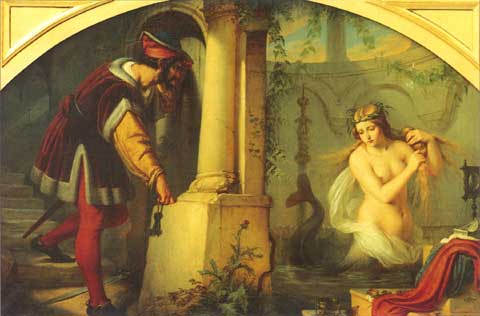
In time, however, Fulk’s curiosity began to get the best of him. He wondered why his lovely bride required time apart from him, and what exactly she did on those nights. Unable to resist the temptation, Fulk burst into her bedroom one of these nights, only to be confronted by a terrifying visage. His wife had transformed herself into a figure that was half-serpent. The entirety of her lower extremities took on the appearance of a massive, bluish-white colored snake. Melusine was so horrified at being discovered that she keeled over dead. It was said that her ghost (in half-serpent form) haunted the site thereafter, and could be heard late at night, slithering about behind the locked door.
In a variation on this tale, Fulk was said instead to have peered through the keyhole of his wife’s chambers on one of her private nights. Inside he saw Melusine sitting in a bath, her body covered with scales from the waist down, her legs having turned into the tail of a fish. Deeply disturbed by what he had seen, Fulk was eventually compelled to question his wife. Upon learning that her trust had been violated, Melusine departed, never to be seen again.
As bizarre as such tales are, many European monarchs took great pride in citing Melusine in their family trees. In fact, according to Sabine Baring-Gould’s Myths of the Middle Ages, a number of royal families altered their genealogies in order to claim descent from the “illustrious” serpent lady. Her story became wildly popular in France, Germany and Spain, and for a time was seldom out of print.
In the early, happy days of Melusine’s marriage, she gave birth to a son, Geoffrey de Anjou. Geoffrey would eventually grow up to be the first Plantagenet King of England. Present at Geoffrey's birth was Bernard of Clairvaux, the famous Cistercian abbot, and yet another founding father of the Knights Templar. Upon first seeing the baby Geoffrey, Bernard made this strange pronouncement: “From the Devil he has come, and to the Devil he’ll return.” Though the Melusine saga may have been a beloved tale in parts of Europe, such was not the case everywhere. The tale seems to have been equally well-known in England, but not equally well-liked. In his book The Conquering Family, Thomas B. Costain writes: “The counts of Anjou and their lovely but wicked wives gained such an unsavory reputation over the centuries that the people of England were appalled when they found that one of them (Geoffrey) was to become King of England.”
This notwithstanding, the House of Plantagenet provided England with some of its most noteworthy monarchs, many of whom admitted to having a soft spot in their hearts for their mythical matriarch, Melusine. Richard the Lionhearted even cited his purportedly Luciferian heritage as being the reason why his family “lacked the natural affections of mankind.” -Boyd Rice
So far, we have our Templars, Cross of Lorraine, a mermaid (in a priory, no less), and some 'Black nobility'... But this was not the end of the story, either... Read more: innerchamber.proboards.com/thread/160/holy-saints-john?page=2#ixzz2dle0cNSQ |
|
|
|
Post by Goldenfleeced on Sept 2, 2013 20:14:16 GMT
Oh, and a little bit more about that 'Little Mermaid'... According to German magazine Der Spiegel, the statue displayed in Copenhagen harbour has always been a copy, with the sculptor's heirs keeping the original at an undisclosed location. Thirteen undamaged copies of the statue are located in locations around the world, listed by Mermaids of Earth, including Solvang, California; Kimballton, Iowa; Piatra Neamţ, Romania and a half-sized copy in Calgary, Canada. The grave of Danish-American entertainer Victor Borge includes a copy as well.
A copy of the statue forms the Danish contribution to the International Peace Gardens in Salt Lake City. The half-size replica was stolen on 26 February 2010, but was recovered on 7 April, evidently abandoned in the park after the thief became nervous about being caught with it.
Girl in a Wetsuit by Elek Imredy, a statue similar to the Little Mermaid, in Vancouver
The statue is under copyright until 70 years after the death of the creator (2029) therefore several copies of the statue have provoked legal actions. As of 2012, replicas of the statue can be purchased on the internet, authorized for use by the Eriksen family.
There are similarities between the Little Mermaid statue and the Pania of the Reef statue on the beachfront at Napier in New Zealand, and some similarities in the Little Mermaid and Pania tales. The statue of a woman diver (titled "Girl in a Wetsuit" by Elek Imredy) in Vancouver, Canada was placed there when, unable to obtain permission to reproduce the Copenhagen statue, Vancouver authorities selected a modern version.en.wikipedia.org/wiki/The_Little_Mermaid_%28statue%29 It kind of makes you wonder why this particular little story seems so important, doesn't it? Thirteen copies...  Which reminds me, brothers... there's a really nice Lodge there in Vancouver, isn't there? Indeed, I believe there is. I'm sure it's quite lovely... And it explains why the poster 'Aqua' 'tinkled in their wetsuit;' 'tinkled...' what an ultramaroon... speaking of wishing upon a star...  Read more: innerchamber.proboards.com/thread/160/holy-saints-john?page=2#ixzz2dleZWp9b |
|
|
|
Post by Goldenfleeced on Sept 2, 2013 20:17:26 GMT
This is taken from 'The Rosicrucians Their Rites and Mysteries' by Hargrave Jennings, 1907... CHAPTER THE TWENTY-FOURTH
THE BELIEFS OF THE ROSICRUCIANS--MEANING OF LIGHTS AND OF COMMEMORATIVE FLAMBEAUX IN ALL WORSHIPFROM the name of the Temple, now Stonehenge, comes the name of Ambresbury, which stands a few miles from it. This is called the 'Ambres of the Abiri'. It is two words, and means the 'Ambres of the Dii Potentes', or of the אבירי, or 'Cabiri'--for they are the same.
The star of the Légion d’Honneur bears the inscription 'Napoléon, Empereur des Français'. This order was instituted by the Emperor Napoleon the First, after the discovery and dissolution of the Secret Society, or Brotherhood, of which General Pichegru, Georges Cadoudal; the famous Moreau, and other noted revolutionary men were members. This order possessed, it is stated, a talisman or mystic head, which served as a recognitive mark, and was supposed to be a sort of bond to the brotherhood. After their death, their secret insignia were discovered; and it has been stated that the Emperor Napoleon, whose attention was instantaneously arrested by great and unusual ideas or supernatural suggestions, in suppressing this mystic symbol or head, adopted it in another form, and substituted his own head in profile, as the palladium, or talisman, for his new order of the 'Legion of Honour'.
The saffron robe of Hymen is of the colour of the Flame of Fire. The Bride, in ancient days, was covered with a veil called the 'Flammeum'; unless made under this, no vow was considered sacred. The ancients swore, not by the altar, but by the flame of fire which was upon the altar. Yellow, or flame-colour, was the colour of the Ghebers, or Guebres, or Fire-Worshippers. The Persian lilies are yellow; and here will be remarked a connexion between this fact of the yellow of the Persian lilies and the mystic symbols in various parts of our book. Mystic rites, and the symbolical lights, which mean the Divinity of Fire, abound at Candlemas-day (February 2nd), or the Feast of the Purification; in the torches borne at weddings, and in the typical flame-brandishing at marriage over almost all the world; in the illuminations at feasts; in the lights on, and set about, the Christian altar; at the festival of the Holy Nativity; in the ceremonies at preliminary espousals; in the Bale, or Baal, fires on the summits of the mountains; in the watch-lights, or votive sanctuary-lights, in the hermitage in the lowest valley; in the chapelle ardente, in the Romish funereal observances, with its abundance of silent, touching lights around the splendid catafalque, or twinkling, pale and ineffectual, singly at the side of the death-bed in the cottage of the peasant. Starry lights and innumerable torches at the stately funeral, or at any pompous celebration, mean the same.
In short, light all over the world, when applied to religious rites, and to ceremonial, whether in the ancient or in the modern times, bespeaks the same origin, and struggles to express the same meaning, which is Parseeism, Perseism, or the worship of the deified FIRE, disguised in many theological or theosophic forms. It will, we trust, never be supposed that we mean, in this, real fire, but only the inexpressible something of which real fire, or rather its flower or glory (bright light), is the farthest off--because, in being visible at all, it is the grossest and most inadequate image.www.sacred-texts.com/sro/rrm/rrm29.htmRead more: innerchamber.proboards.com/thread/160/holy-saints-john?page=2#ixzz2dlhSC0T0 |
|
|
|
Post by Goldenfleeced on Sept 2, 2013 20:25:05 GMT
Now, with all that in mind, let's 're-visit' the mermaid 'misericord' at the Cartmel Priory... see the comb and mirror? Looks familiar, now, doesn't it...? Now, we can begin to see why a 'mermaid' and her 'father' might be found hanging around in a 'church' building, I think...  |
|
|
|
Post by Goldenfleeced on Sept 2, 2013 20:25:07 GMT
There are mermaid icons in many other 'churches' located in various places... one has actually been placed as a 'keystone' in an arch... angle... lol...  This may be 'apprentice work' from an 1800's rebuild of a cloister arch at the Notre Dame Cathedral at Le-Puy-en-Velay Here is a really great link to various representations of mermaids in ancient church architecture... I found it to be quite enlightening, really. www.paradoxplace.com/Church_Stuff/Mermaids.htm |
|
|
|
Post by Goldenfleeced on Sept 2, 2013 21:31:29 GMT
The Shugborough Shepherd's Monument ...fashioned by the Flemish sculptor Peter Scheemakers... is set within a stone arch which appears like an entrance to a cave, carved to look natural and wild. It contains a marble bas-relief copy of Poussin’s painting “The Shepherds of Arcadia” and a carved inscription below it.
The relief shows a woman and three shepherds, two of whom are pointing to a tomb. On the tomb is carved the Latin text ET IN ARCADIA EGO ("I am also in Arcadia" or "I am, even in Arcadia").
The Shugborough relief, adapted from Poussin's second version of The Shepherds of Arcadia
The carving displays a number of small alterations from the original painting.
Notably, the letters to which the shepherds are pointing have been changed, and an extra sarcophagus has been placed on top of the main tomb.
Also, the relief sculpture is a mirror (or horizontally reversed) image of the painting. Above the Poussin scene are two stone heads, one of which bears a strong likeness to the goat-horned Greek god Pan.
Below it, an unknown craftsman carved the mysterious inscription, a sequence of ten letters that has never been satisfactorily explained, and has been called one of the world's top uncracked cipher texts.
The monument has been dated by various writers to almost any year from 1748 to 1767. The most frequently quoted explanation of the monument is that it is a work by Thomas Wright, from 1748-50 with additions by James Stuart in about 1763.
There is however a good reason to suppose that the Shepherds Monument was not there in 1748.
Philip Yorke, Lady Elizabeth Anson’s brother and husband of Jemima, Marchioness Grey, visited in August 1763 and wrote to his father, Lord Hardwicke describing, as he writes, the “many embellishments since I saw it (Shugborough) in 1748.”
“I should not omit to mention the Bas Relief from Poussin’s Arcadian Picture, the most elegant Piece of modern sculpture I ever beheld & does great honour to Scheemaker’s chisel…”
Also, recent research has found that the first known mention of the monument is in a letter from Lady Elizabeth Anson, the wife of Admiral George Anson, to her brother-in-law Thomas in 1756. This means that the monument must have been constructed on or before 1756.
This limits the possible date of the monument’s construction from between 1749 to 1756. These years are important as it is during these years that one very enigmatic figure entered the lives of the Anson family who could have been the reason for the construction of the monument.
This person is none other than the Count of St. Germain...shugborough.info/chapters.php?id=1And their 'answer' to the code... is that the 'code' is the combination to some locks... Keyless combination locks were first introduced at the beginning of the 17th Century. During that period, and in literature, letter code combinations were written in capital letters followed by a period. In Beaumont and Fletcher's play The Noble Gentleman written before 1615 were the lines:
"A cap case for your linen, and your plate, with a strange lock that opens with A.M.E.N."
These two safe boxes make use of the rotary combination type of locks, using a combination dial to open it.
The rotary combination type of lock, which uses a combination dial to open it.shugborough.info/chapters.php?id=8An intriguing notion, I thought... |
|
|
|
Post by Goldenfleeced on Sept 2, 2013 22:04:52 GMT
The most interesting thing about this monument is its obvious association with another site, called Rennes-le-Chateau, and a painting by Poussin. What was its importance to Thomas Anson, who bothered to re-create on his estate? It is, of course, said to have connections to the 'Grail' mystery, which has interesting connections to many things, on many levels... We know that Anson also had a 'fancy,' or 'frivolous reproduction' of the octagonal Tower of the Winds built on his property. Anson's octagon's southern orientation points an azimuth straight through the center of Avebury Circle and the center of Stonehenge!! Anson's property was aligned with these two structures. The original octagonal Tower of the Winds in Athens Greece also points a 315 degree azimuth to the center of Avebury Circle. Two Tower of the Winds that point to Avebury, and speak to something else... three and 15 being the numbers of Inanna, and then, of course, there's this... And this... "For what comes on the Wind can only be slain by that which has known the Wind; and what comes on the seas can only be slain by he who has known the Waters. Thus it is written, in the Ancient Covenant." |
|
